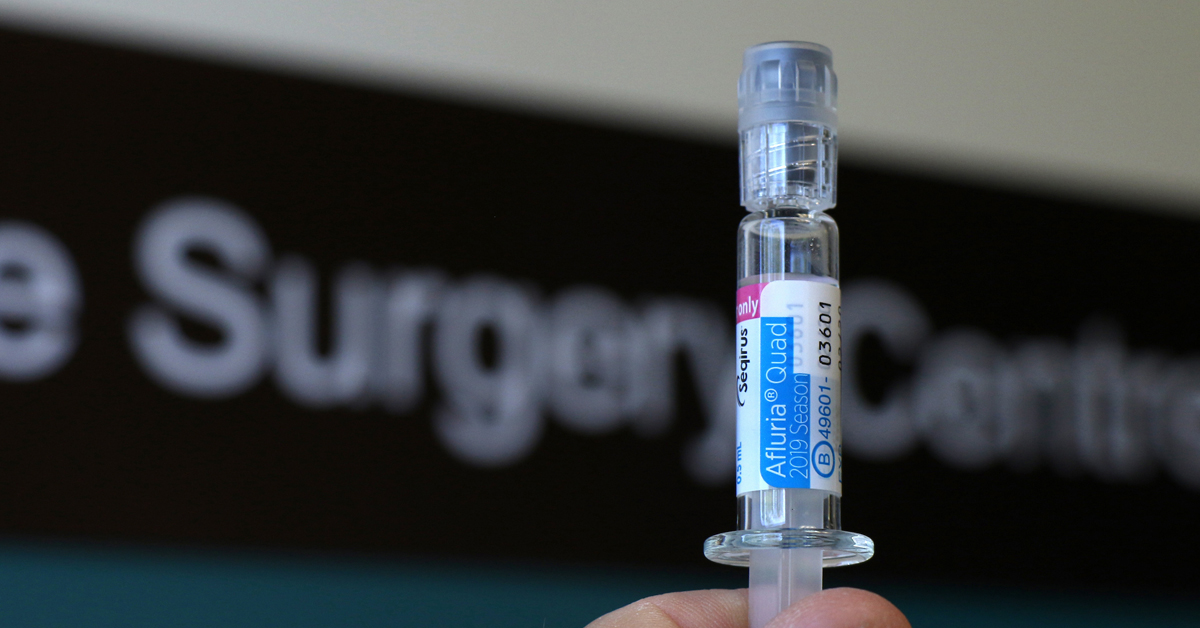
Many experts are predicting a resurgence of influenza in 2022.
During the COVID-19 pandemic to date, the influenza virus has circulated at much lower levels than usual. In 2019, there were 313,033 notifications of laboratory-confirmed influenza across Australia – and 953 deaths attributed to the virus. In 2021, 2 years and several lockdowns later, there were just 598 confirmed cases and zero deaths.
However, Professor Ian Barr, the Deputy Director of the World Health Organisation Collaborating Centre for Reference and Research on Influenza at the Doherty Institute for Infection and Immunity, told newsGP a resurgence of flu in 2022 is “inevitable”. Professor Barr also warned that complacency may cause people to put off getting their flu shot this year.
Annual vaccination is the most important measure to prevent influenza and its dangerous complications. It is recommended for everyone aged 6 months and over, strongly recommended for high-risk groups, and free for some of these groups.
Managing vaccine complacency

People might be ‘vaxxed out’ after the unprecedented COVID-19 vaccination push. Some patients may also be so focused on avoiding COVID-19 that they ignore the risk of influenza.
Some strategies to consider:
- Discuss with patients both the medical and economic benefits of influenza vaccination – such as not missing time off work.
- Display posters promoting the benefits of influenza vaccination in your waiting room (see examples from the Australian Department of Health and the RACGP).
- Take an ‘every patient, every time’ approach to promoting influenza vaccination.
- Consider an email or social media campaign promoting the benefits and safety of influenza vaccination.
Influenza and COVID-19 vaccinations can be given together. Knowing that it is OK to have both vaccines on the same day may prompt people to book their shots. Clinics will have to carefully plan co-vaccination – see below for some ideas.
Taking a quality improvement approach to delivering influenza vaccines
3 of the 10 PIP QI measures are related to influenza vaccines:
- Measure 4: Proportion of regular patients aged >65 who were vaccinated against influenza
- Measure 5: Proportion of regular patients with diabetes who were vaccinated against influenza
- Measure 6: Proportion of regular patients with COPD who were vaccinated against influenza
You can use your practice’s QI report to analyse influenza vaccine rates and make improvements in these high risk groups. Choose a simple, realistic goal and get started.
If your current vaccination rate is 20 per cent, aiming for 80 per cent is setting yourself up for failure. You might instead shoot for a 10 per cent improvement or aim to have your COPD rate as good as your diabetes rate. Or perhaps you could focus on maintaining the same level of vaccination this year as you did in 2019 or 2020, which could be a considerable achievement given the increased workload for your vaccinators this year.
Choose a measure
North Western Melbourne Primary Health Network (NWMPHN) does some of the work for you by providing your quarterly QI report. Using this, you could set a measure such as “percentage of active patients with diabetes who have been vaccinated against influenza by [date]”.
Brainstorm ideas
Bring your practice team together, discuss what you are doing now and decide where to start.
- Do you need to do a data cleanse before you start? For example, you could clean “indicated diabetes but no diagnosis” and “indicated COPD but no diagnosis” using Pen CAT.
- Do you already run influenza vaccination clinics? Do you want to start doing influenza vaccine clinics? How will you manage co-vaccinating for COVID-19 and influenza – will you run separate COVID-19 vaccine clinics with influenza co-vaccination on the day? Or will you be prepared to co-administer both at all COVID-19 and influence vaccination clinics?
- Where do you get lists of patients from? Do you send text messages to patients? How do you follow up patients who don’t have smartphones? How do you manage bookings coming into the clinic? Do you use Topbar to prompt opportunities for vaccinations?
- How will you staff the clinic?
Make a plan
Following your brainstorm session, you are ready to form a plan such as the example below.
Goal
For example: To improve the proportion of active patients aged with diabetes who were vaccinated against influenza from 60 per cent to 70 per cent by 1 October 2022.
Plan
Examples of the ideas to test:
- In 2022 we are going to set up dedicated influenza vaccination clinics, co-administering with the COVID-19 vaccine winter dose.
- Manager will liaise with practice nurse and GPs to set up availability and times.
- Manager will liaise with clinical team and reception about booking rules into the vaccination clinic. For example: Dr A prefers one patient every 5 minutes, Dr B is happy for one patient every 3 minutes.
- Manager to finalise process for booking into vaccination clinic. For example: can patients book directly, or do they need to book through reception?
- Clinical team and manager to finalise process for managing co-vaccination with COVID-19 winter dose. For example: Pfizer COVID-19 vaccine comes in vials of 6, so the practice nurse will need to know how many are booked for co-vaccination so they can draw the correct number prior to the clinic. The practice nurse might then notify other clinical staff the number of extra doses left over for opportunistic vaccinations over the day.
- Manager to ensure staff availability for staff vaccination clinic.
- Manager to ensure space available for socially distanced waiting before and after vaccination.
- Practice nurse to ensure sufficient stock available and develop a process for cancelling a clinic if stock runs low.
- Clinical team to discuss process during vaccination clinic. For example: GP seeks consent, writes notes and enters vaccine details, provides billing notes; practice nurse gives vaccine.
- Practice nurse or manager to use Pen CAT to identify all eligible patients (this may range from all patients through to targeted groups, depending on capacity) and generate an Excel spreadsheet of mobile phone numbers, which the practice manager can then use to send out an SMS welcoming patients to the vaccination clinic.
- Patients who don’t have SMS capability will be sent an invitation letter instead.
- Topbar to be installed to improve opportunistic vaccination rates.
Do it, study it, and act on any changes you want to make
The next steps of the Plan, Do Study, Act (PDSA) cycle is to carry out your plan, test your ideas, analyse the results and reflect on what happened. You can then make changes.
For example, after running your first clinic, you might realise that social distancing requirements mean patients can only be booked every 6 minutes to alleviate pressure on waiting areas. You could then alter your plan to reflect this.
Notes on billing for influenza and COVID-19 vaccines
- There is no dedicated MBS item for influenza vaccinations.
- Doctors can only bill for the time they themselves spend face-to-face with a patient for influenza vaccination, which for a routine influenza examination would usually be a level A.
- If a COVID-19 vaccine is co-administered, this item can be co-claimed as an unrelated item
- Practice nurses can bill an Item 10997 for patients with a current GP Management Plan for a chronic condition such as diabetes, respiratory or cardiac disease who would benefit from influenza vaccination.
- Item 10990 can also be added for eligible patients.
Resources and more information
Visit nwmphn.org.au/influenza to learn about the ways we can support your practice this flu season. The following resources will also help.
- ATAGI advice on seasonal influenza vaccines 2022
- HealthPathways Melbourne: Immunisation – Influenza
- NCIRS: influenza vaccination 2022
- NWMPHN QI activity templates for increasing influenza vaccinations for patients:
- Recent NWMPHN webinars:
- Preparing your practice for flu season with practice nurse Natalie Simpson-Stewart
- COVID-19 and flu with infectious diseases physician Dr Michael Birrell
Questions?
Our Primary Health Care Improvement team is eager to help. Please contact primarycare@nwmphn.org.au or visit our quality improvement hub for more information.
MBS disclaimer: NWMPHN provides this information as a guide only and recommends general practitioners familiarise themselves with the detailed descriptions contained in the MBS, available at mbsonline.gov.au. Under the Health Insurance Act 1973 practitioners are legally responsible for services billed to Medicare under their Medicare provider number or in their name.




